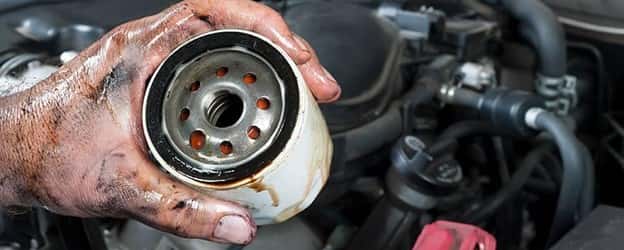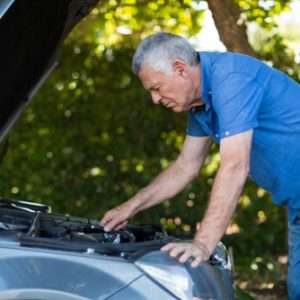Understanding Car Engine Oil Leaks
An engine oil leak can be a serious problem. It can lead to engine damage. It’s important to understand the causes and symptoms. This will help you address the issue quickly.
Oil leaks can range from minor drips to significant puddles. Ignoring them can result in costly repairs. Regular maintenance is key to preventing leaks.
Common Causes of Oil Leaks
Several factors can contribute to engine oil leaks. Let’s explore some of the most frequent culprits.
- Worn Seals and Gaskets: Over time, rubber seals and gaskets can dry out and crack.
- Loose Oil Pan Bolt: A loose bolt can cause a leak.
- Damaged Oil Pan: Road debris can damage the oil pan.
- Faulty Oil Filter: An improperly installed or damaged oil filter can leak.
These are just a few of the potential causes. A thorough inspection is often necessary to pinpoint the exact source.
Specific Leak Locations
Leaks can occur in various locations. Knowing these locations can help you diagnose the problem.
- Valve Cover Gasket
- Oil Pan Gasket
- Rear Main Seal
- Front Crankshaft Seal
Recognizing the Symptoms
Identifying the symptoms of an oil leak is crucial. Early detection can prevent serious engine damage.
- Visible Oil Puddles: Look for oil under your car.
- Burning Oil Smell: A burning smell can indicate oil leaking onto hot engine parts.
- Low Oil Level: Regularly check your oil level.
- Engine Overheating: Low oil can lead to overheating.
- Smoke from the Engine: This is a serious sign.
FAQ: Car Engine Oil Leaks
Q: How often should I check my oil level?
A: It’s recommended to check your oil level at least once a month. More frequent checks are advisable for older vehicles.
Q: Can I drive with an oil leak?
A: It’s generally not recommended. Driving with an oil leak can cause further engine damage. It’s best to get it repaired as soon as possible.
Q: What does it cost to repair an oil leak?
A: The cost varies depending on the location and severity of the leak. Get a quote from a qualified mechanic.
Q: Can I fix an oil leak myself?
A: Some minor leaks can be fixed with DIY solutions. However, complex leaks require professional expertise. If you’re not comfortable working on your car, it’s best to consult a mechanic.
Solutions and Repairs
Addressing an oil leak requires a proper diagnosis. Then, appropriate repairs can be made.
The repair process may involve replacing gaskets, seals, or even the oil pan. A qualified mechanic can assess the situation and recommend the best course of action.
An engine oil leak can be a serious problem. It can lead to engine damage. It’s important to understand the causes and symptoms. This will help you address the issue quickly.
Oil leaks can range from minor drips to significant puddles. Ignoring them can result in costly repairs. Regular maintenance is key to preventing leaks.
Several factors can contribute to engine oil leaks. Let’s explore some of the most frequent culprits.
- Worn Seals and Gaskets: Over time, rubber seals and gaskets can dry out and crack.
- Loose Oil Pan Bolt: A loose bolt can cause a leak.
- Damaged Oil Pan: Road debris can damage the oil pan.
- Faulty Oil Filter: An improperly installed or damaged oil filter can leak.
These are just a few of the potential causes. A thorough inspection is often necessary to pinpoint the exact source.
Leaks can occur in various locations. Knowing these locations can help you diagnose the problem.
- Valve Cover Gasket
- Oil Pan Gasket
- Rear Main Seal
- Front Crankshaft Seal
Identifying the symptoms of an oil leak is crucial. Early detection can prevent serious engine damage.
- Visible Oil Puddles: Look for oil under your car.
- Burning Oil Smell: A burning smell can indicate oil leaking onto hot engine parts.
- Low Oil Level: Regularly check your oil level.
- Engine Overheating: Low oil can lead to overheating.
- Smoke from the Engine: This is a serious sign.
A: It’s recommended to check your oil level at least once a month. More frequent checks are advisable for older vehicles.
A: It’s generally not recommended. Driving with an oil leak can cause further engine damage. It’s best to get it repaired as soon as possible.
A: The cost varies depending on the location and severity of the leak; Get a quote from a qualified mechanic.
A: Some minor leaks can be fixed with DIY solutions. However, complex leaks require professional expertise. If you’re not comfortable working on your car, it’s best to consult a mechanic.
Addressing an oil leak requires a proper diagnosis. Then, appropriate repairs can be made.
The repair process may involve replacing gaskets, seals, or even the oil pan. A qualified mechanic can assess the situation and recommend the best course of action.
My Personal Experience with an Oil Leak
I remember the day I first noticed the telltale sign of an oil leak on my old sedan, Betsy. It was a small puddle, shimmering rainbow-like on my driveway. I initially dismissed it, thinking it was just water. I was wrong.
The Burning Smell
Soon after, I started noticing a distinct burning smell after driving. It was faint at first, but it grew stronger each day. I knew then that something was definitely wrong. I popped the hood and, sure enough, I saw traces of oil splattered around the engine block. Panic started to set in.
The Diagnosis
I took Betsy to my trusted mechanic, a guy named Frank. After a thorough inspection, he told me it was the valve cover gasket. “Common problem on these older models,” he said. He explained that the gasket had dried out and cracked, causing the oil to seep out. The repair wasn’t too expensive, thankfully. I think it was around $250 including parts and labor.
The Aftermath
Frank replaced the gasket, and the burning smell disappeared. I felt a huge sense of relief. I started checking my oil level more frequently after that. I even learned how to top it off myself. It was a valuable learning experience. I now understand the importance of regular maintenance and early detection.
- I now check my oil every two weeks.
- I also visually inspect under the car for any signs of leaks.
- I keep a quart of oil in my trunk, just in case.
Since then, I haven’t had any major oil leak issues. I’m grateful I caught it early. It taught me a valuable lesson about car maintenance.





